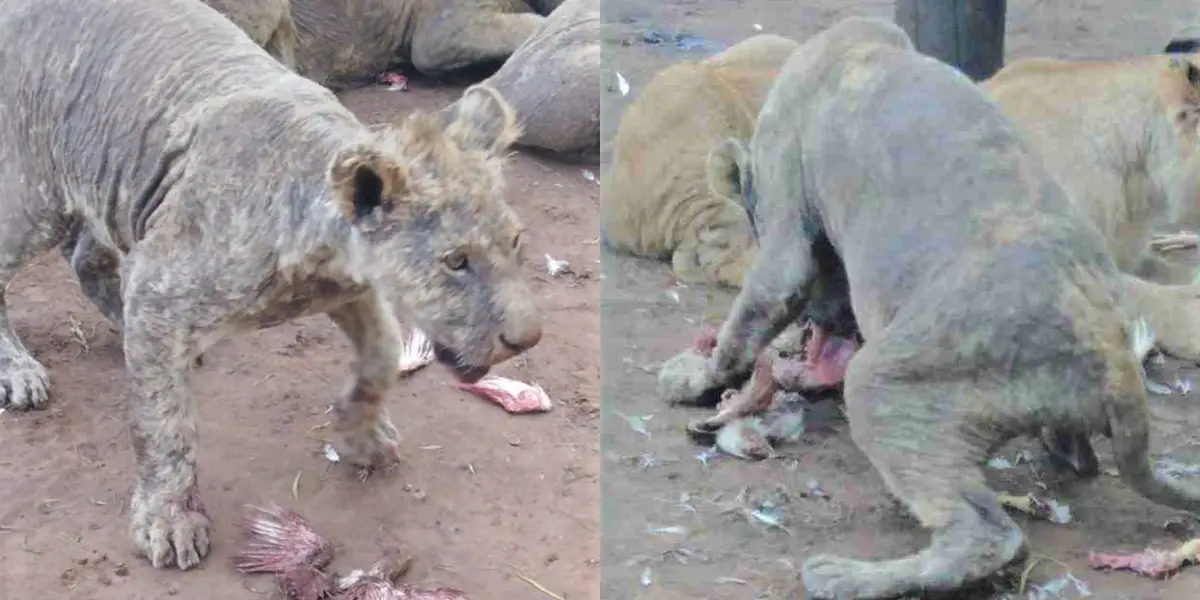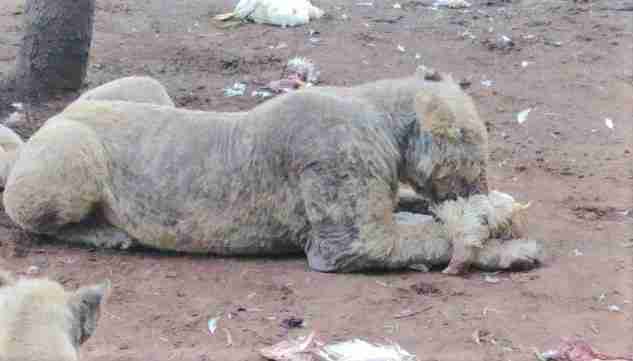In what is
being called “one of the most shocking cases of animal neglect” in South
Africa, more than 100 lions and other animals were discovered in an abandoned
facility in South Africa’s North West province. The creatures were diseased,
overcrowded, and in some cases, close to death.
According to
National Geographic, the situation received attention after an anonymous
tipster contacted a journalist, who then contacted the National Council for
Societies for the Prevention of Cruelty to Animals (NSPCA). The organization is
tasked with enforcing South Africa’s animal welfare legislation.
NSPCA
inspectors ventured to the facility, located at Pienika Farm. They discovered
27 lions afflicted with mange, a skin disease caused by parasitic mites. The
condition was so severe, all of the lions lost their fur. The inspectors
reported that the animals were being held in filthy, overcrowded enclosures. In
a space meant for two, thirty were contained.
At least
three of the lion cubs were suffering from a neurological condition called
meningoencephalitis. The inflammation of the brain left them unable to walk. As
a result, one cub was euthanized by a veterinarian at the facility.
Said Douglas
Wolhuter, manager of the NSPCA wildlife protection unit that inspected the
farm: “It’s hard to describe because it leaves you feeling hollow, knowing that
you’ve got the king of the jungle in conditions like that. It’s
soul-destroying.”
The
situation isn’t entirely unique in South Africa. In 2015, the documentary Blood
Lions estimated that between 6,000 and 8,000 predators — mostly lions — were
being held in captive-breeding facilities in South Africa. The film’s protagonist and narrator, Ian
Michler, estimates that number is now 10,000. Furthermore, there have been
multiple reports about South Africa’s captive lion industry revealing that the
animals’ living conditions are often less than satisfactory.
Facilities
of the kind exist primarily for tourism purposes. Visitors pay to pet,
bottle-feed, take selfies with lion cubs, and even walk alongside the mature
animals. According to Michler, most of the lions end up shot by trophy hunters
— the majority of which come from the United States.
Michler
theorizes that the Pienika Farm’s lions were being breed for the lion bone
trade. As National Geographic reports, the trade serves an an alternative to
the tiger bone trade for traditional medicine in Asia. Though the lions
intended for the bone trade need to appear healthy, it is common for many of
the beasts to be neglected.
“If you’re
breeding lions for the lion bone trade, they don’t care what those lions look
like,” he said. “Because at the end of the day, all they’re going to do is end
up in a sack, a bag of bones that’s going to go to Asia.”
Now, it’s up
to the courts to punish the accused. But, Michler isn’t optimistic this will
occur. “If the lions had a voice, of course they would be roaring for the
courts to come down and decide—say that, yes, we actually do need fair and
first-world standards for welfare of our species,” he said. “But I can’t see
any outcome ending the breeding practices or the lion bone trade.”
The
surviving lions are still being kept in the same facility. Their fate depends
on the results of the investigation and the following court case. According to
the Humane Society’s Delsink, things are “very uncertain.” If the lions
survive, they can’t be released into the wild because all they’ve known is
captivity. Unfortunately, there aren’t enough reputable sanctuaries in South
Africa to care for the animals.
“The future
for these cats is bleak,” Delsink said, “because there’s very few options
available to them.”


Comments
Post a Comment